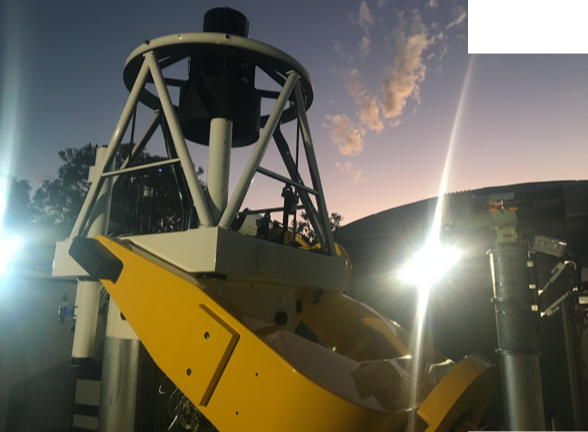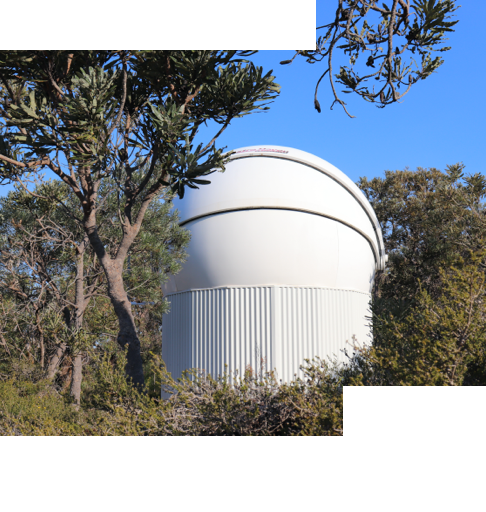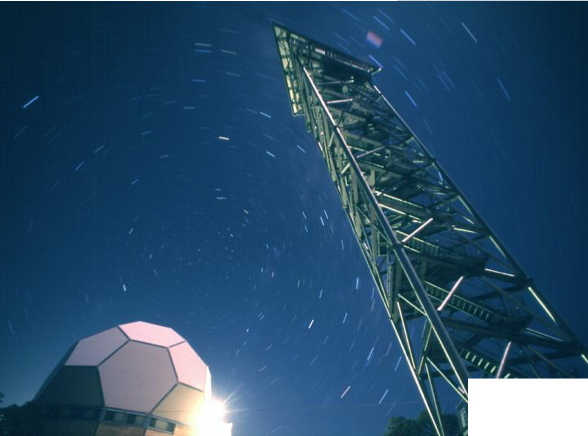
Gingin Gravity Precinct
Unravelling the mysteries of the universe
The Gingin Gravity Precinct is situated on the Swan Coastal Plain, 80km north of Perth and UWA’s campus. Established in 1998 with support of the Western Australian Government, the 4.7-hectare site is surrounded by natural woodland with high species diversity.
The Precinct hosts The Zadko Observatory and University of Western Australia’s OzGrav node, an ARC Centre for Excellence. It is also home to the Gravity Discovery Centre and Observatory, an independent, not-for-profit science education centre.
Zadko Observatory
The Zadko Observatory is home to the Zadko Telescope, a 1-metre f/4 robotic telescope initially funded by a generous donation from James Zadko. It is the only metre class facility in Australia dedicated to automated follow-up imaging of alerts or triggers received from different external instruments/detectors.
It plays a niche role in Australian and global astronomy as it is located at a longitude not covered by other metre class facilities and provides an important resource for time-critical projects, and observations by the Zadko contributed to the discovery of gravitational waves produced by a neutron star collision.
The Zadko Observatory:
- is an important resource for the space situational awareness node of the UWA international Space Centre
- works with the Laser Interferometer Gravitational Wave Observatory (LIGO) in the search for the source of gravitational waves
- increases the discovery of optical transients in the Southern Hemisphere
- identifies and tracks asteroids and space debris to ensure the safety of future space missions
- partners with industry for research and development in satellite tracking
- contributes to a global network of robotic telescopes located in France, Chile and Australia for the discovery of exotic transients
Working with Zadko Observatory

Research projects
We collaborate with partners across the globe and are always keen to participate in new and exciting projects. Get in touch to explore collaboration using the Zadko Telescope.

Commercial hosting services
The niche location and onsite technical support makes the Observatory prime for hosting commercial telescopes.
ARC Centre of Excellence for Gravitational Wave Discovery (OzGrav)
With the Zadko Telescope, the UWA node of the ARC Centre of Excellence for Gravitational Wave Discovery (OzGrav-UWA) played a significant role in the momentous discovery of the first gravitational wave events in 2015. OzGrav-UWA continues to collaborate with the Zadko Observatory, and the precinct is also home to their High Optical Power Facility (HOPF).
The HOPF facility consist of two 80m long optical cavities, configured in an L-shape, suspended by high performance vibration isolation systems in a high vacuum enclosure. It is the only facility in the world that has large scale suspended cavities with mirror to laser power ratio that is comparable to the current km-scale advanced gravitational wave detectors such as LIGO. HOPF enables research on techniques for improving the sensitivities of the current gravitational wave detectors and those of the future.
OzGrav-UWA’s key impacts and current research include:
- technology development for gravitational wave detection
- gravitational wave data analysis
- multi-messenger astronomy and astrophysics
- spin-off technologies and
- teaching and learning of Einsteinian Physics
Work with OzGrav-UWA:
- Explore postgraduate opportunities at OzGrav-UWA for those seeking to understand and invent new instruments for the future.
- OzGrav is committed to collaborating with the industry sector through research partnerships and engagement. Get in touch to find out more.
More than physics: other research opportunities
Gingin Gravity Precinct’s 4-hectare site is surrounded by natural woodland with high species diversity that overlays the Gnangara groundwater mound, Perth’s most important groundwater resource. The soils are sandy, with low moisture-holding capacity. It is a low seismic noise site and a proposed Dark Sky Reserve available to researchers across UWA, making it the perfect location for your next research project, and is especially suited to Biological Sciences including sensory biology and animal behaviour research
Benefits include:
- Low seismic noise site
- Proposed Dark Sky Reserve
- Close proximity to Perth and onsite accommodation
- TERN OzFlux site is located 2km away and provides nationally consistent observations of micrometeorology
- Geomagnetic Monitoring Station measuring changes in the Earth’s magnetic field
Get in touch with Gingin Gravity Precinct to find out more.
Gravity Discovery Centre and Observatory
This independent centre and observatory located in the Gingin Gravity Precinct has something for everyone, from astronomy to astrophysics and indigenous culture to biodiversity. Day to night, there’s always something new to learn and discover. Find out more about the Gravity Discovery Centre and Observatory.




